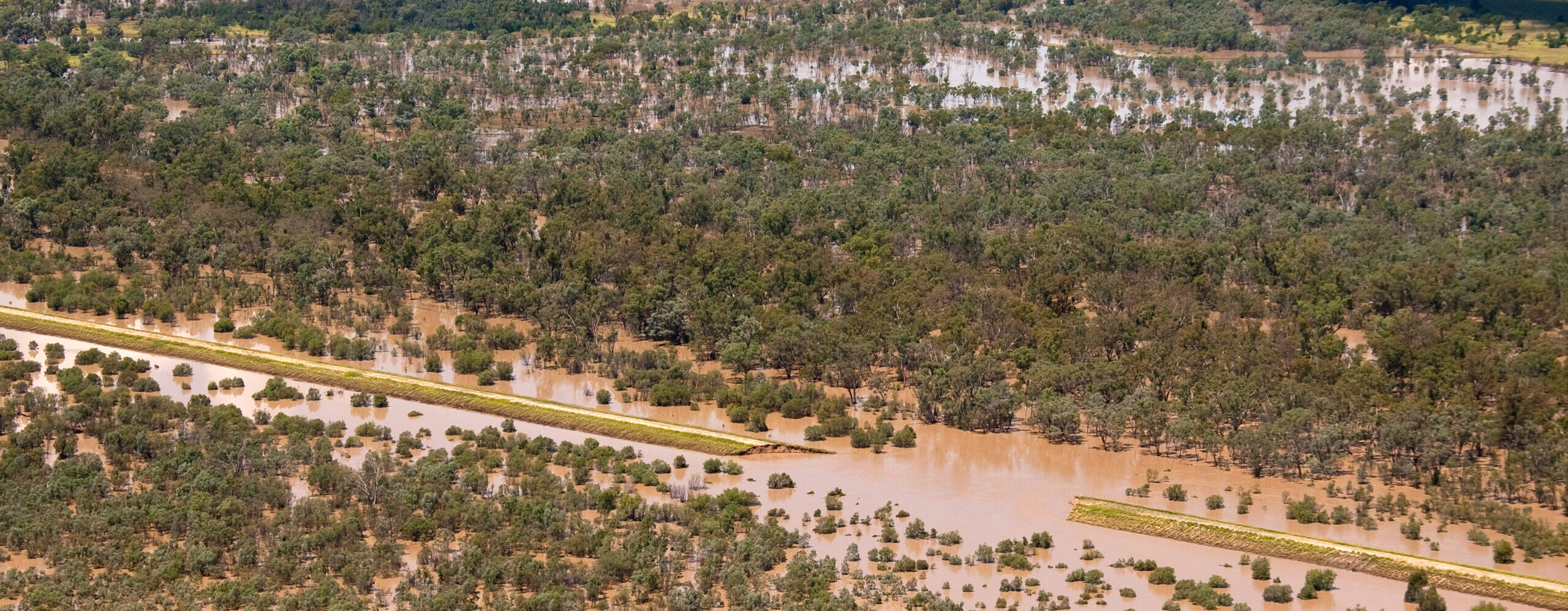Prepare repair estimates
When you are able to get an idea of the damage done, start preparing repair estimates so you can be on the front foot to apply for grants. Examples include:
- $/km of fencing needing to be fixed
- $/km of new fencing required
- quotes for replacement troughs/water infrastructure
- earth moving equipment rate and expected achievable repairs km/day.
Disposing of carcasses
Disposing of carcasses may be required when they present a disease risk to humans or other animals eg close to water points, close to homes.
Before you consider moving any dead animals, it’s important to consider your own safety first.
There are several bacterial diseases in water, wet soil & carcasses that can cause serious diseases in humans. Please wear appropriate personal protective equipment, such as gloves, leather or rubber boots, clothes that cover as much skin as possible, respiratory and eye protection. Handle the carcasses as little as possible and use machines if they are available. Always practice good hygiene after contact with a carcass by washing your hands well with soap and water.
If you feel unwell after doing so, don’t mess about, call the 13HEALTH hotline (13 43 25 84).
Burying carcasses
Where possible, burying carcasses is recommended to prevent surviving stock from coming in contact with the decaying material. There are some factors to keep in mind when doing so to minimise the risk of contaminating soil, groundwater and surface water sources.
If the carcasses are intact, the general recommendation is to not put more than 10-15 carcasses in each burial pit. This is to minimise the potential for fluid movement as one adult bovine carcass can release up to 160L. For this reason, it is also recommended to space burial pits more than 25m apart.
In instances where burial pits need to accommodate more than 10-15 head each, it would be best to contact the Department of the Environment, Tourism, Science and Innovation (DETSI), as they will be able to provide advice with individual site suitability. The DETSI Pollution Hotline is 1300 130 372.
A ‘good’ site for burial pits will be:
- more than 300m from a bore
- more than 200m from a house/dwelling
- more than 250m for underground or above ground infrastructure (e.g. powerlines, water pipes, sewerage, etc.)
- more than 100m from a surface water source in its usual location
- on a slope of less than 6%.
Burial pits should be made on stable soils with low permeability and have groundwater at a depth of greater than 10m (i.e. minimum 5m deep pit + 5m buffer =10m surface to groundwater level).
Importantly, if you do construct burial pits, be sure to cover the carcasses with at least 2m of soil over the top.
Alternative carcass disposal options
If burial pits aren’t an option and you have some lime on-hand, applying lime over the carcasses will discourage flies and insects – a relatively small but important consideration for limiting the spread of diseases to surviving stock. Don’t use lime on carcasses in burial pits as it will slow the decomposition down.
If you have any questions, contact your local biosecurity officer (call 13 25 23), or extension officer.
Monitor hay drop sites
While hay drops are a blessing, it is worth monitoring drop sites for sneaky, invasive, opportunistic weeds.
Participate in surveys
You will no doubt be asked to participate in numerous surveys requesting estimates of the scale of damage. Completing these surveys will help inform all levels of government and assistance organisations where future funding should be directed and what resources are needed to help recovery.
Look for supporting evidence such as photos and invoices
While proof of the damaged infrastructure will be required, accompanying those photos with supporting evidence of what it looked like when it was in working order, can also be beneficial in demonstrating the amount of damage. Examples of supporting evidence include invoices and photos of the infrastructure in working order at an earlier date.
